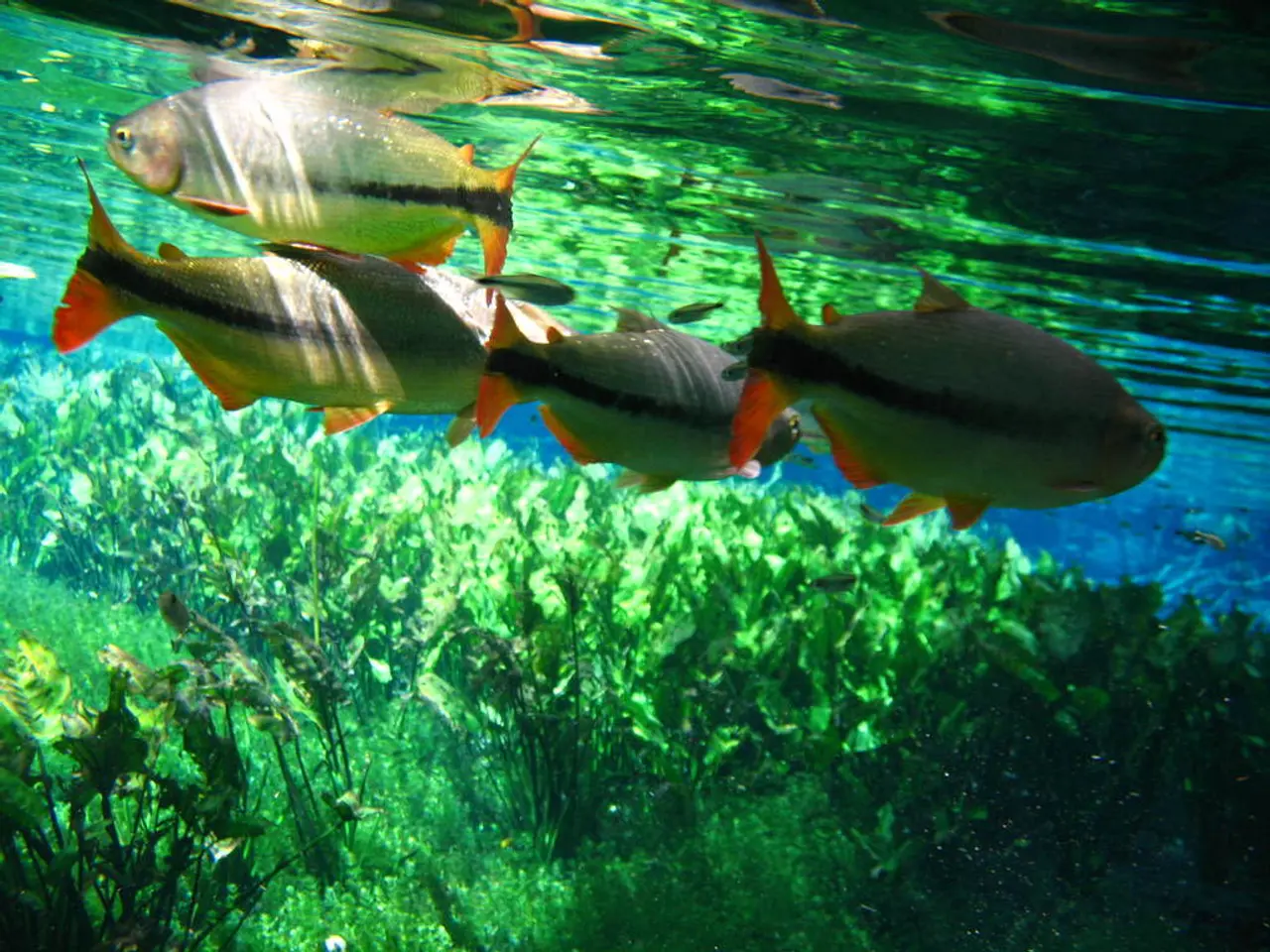Amphibian Population Health Update
In the intricate tapestry of our planet's ecosystems, amphibians play a vital role. These fascinating creatures, which include frogs, toads, salamanders, and newts, number over 7,000 known species. However, they are perishing at an alarming rate, with about a third of species threatened by extinction in 2004.
Amphibians are considered an "indicator species" because they react so quickly when environmental factors change. Their sensitivity to their surroundings, due in part to their highly permeable skin that helps them breathe, makes them a barometer for the health of our planet. A decline in amphibian populations can signal trouble for the wider environment.
One of the most significant threats to amphibians is the infectious chytrid fungus, which has been a pandemic in over 700 amphibian species since the mid-1900s. When amphibians come in contact with this fungus, it degrades the keratin layer of their skin, causing skin sloughing, lethargy, weight loss, and death. Scientists are still exploring efficient ways to slow the spread of this lethal fungus.
The fungal spores move through water and stick in soil. This means that human activities, such as the use of fertilizers and pesticides, can contribute to the spread of the fungus. Pollutants like toxins, pesticides, fertilizers, industrial wastes, and plastics can penetrate amphibian eggs' membranes and poison developing larvae.
Other human-related factors contributing to the decline in amphibian populations include the construction of roads and dams, exploitation as pets or ingredients, and pollution. In the United States and worldwide, various organizations and researchers are actively working on solutions to save endangered amphibian species. Notable efforts include scientific institutions focusing on habitat restoration, breeding programs, and conservation strategies. Integrated projects involving habitat management, species monitoring, and environmental policies to protect amphibians and their ecosystems are also underway.
Individuals can also help endangered amphibians. Reducing fertilizer and pesticide usage can benefit these sensitive creatures. Keeping pets indoors can help protect amphibian populations. Covering your pool when not in use can save amphibians from falling in.
For those who wish to contribute financially, "EarthTalk®", produced by Roddy Scheer & Doug Moss for the 501(c)3 nonprofit EarthTalk, is a good place to start. Visit earthtalk.org to donate.
The annual rate of decline in amphibian populations is 3.79% in the U.S. alone. By taking action, we can help reverse this trend and ensure the survival of these crucial species. Amphibians play a crucial role in ecosystem viability by improving biodiversity and resilience in aquatic and terrestrial ecosystems. They eat decomposers, allowing soil to retain nutrients longer, and tadpoles feed on algae, slowing algal blooms and eutrophication.
Let us join hands in the fight for amphibian conservation. Their survival is a testament to our commitment to a healthier and more sustainable planet.








